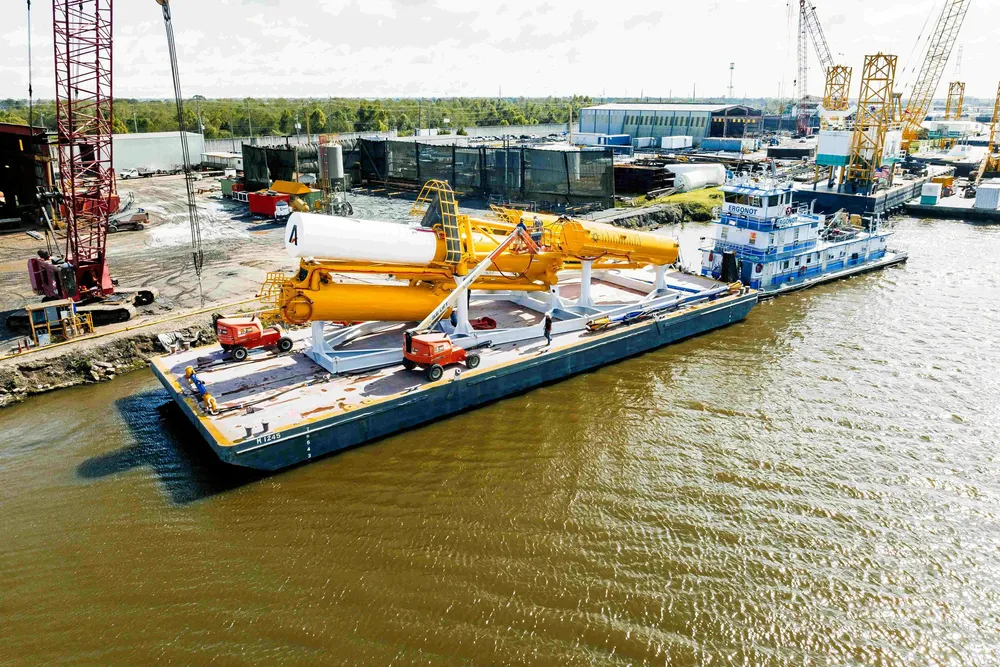California fold-up floating wind pioneer picks Norway over Trump's US
San Francisco-based technology company with time-saving folding floater concept has jumped into the arms of Norway

The developer of a pioneering folding floating wind concept born in the US has picked Norway for its first full-scale demonstration project after earlier saying it would look outside America "for obvious reasons".
In an encouraging week for Norway’s aspirations to lead a global scaling up of floating offshore wind, two projects eying deployment of next-generation turbines have secured demo slots at the country’s Marine Energy Test Centre (METCentre).
California-based Aikido plans to install a 15MW demo project, called ‘AO60’ in 2027, promising "one of the largest floating wind platforms constructed and deployed to date".
Norway’s own Odfjell Oceanwind (OOW) has also secured a slot with 24MW capacity grid connection at the same site, with the ambition of installing a floating offshore wind turbine in 2028.
The Aikido platform consists of thirteen, modular steel components, including columns and trusses, that can be fabricated at existing offshore wind or steel fabrication sites.
The Aikido platform uses pin joints to complete the assembly of the platform without any major welding or painting works. The pin joints act as hinges and allow the platform to be folded during assembly, taking up just one-third of the space of traditional designs, according to an announcement about the demonstrator released by Norwegian Offshore Wind.
The design allows platform components to assembled at a site near the test centre, "in a matter of days, not months like traditional construction techniques", the industry association stated.
Once deployed in the water, the platform is able to unfold during a simple ballasting procedure.
'Missed opportunity for US'
“We are currently considering a couple of different options about where to start working on this project. I can't say where; I can say they're not in the US for, I think, very obvious reasons,” he said previously, adding: “You're seeing with our company looking to deploy technologies and projects abroad, that definitely will become a missed opportunity for the US.”
Commenting on news of the Norwegian demonstrator project this week, Kanner stated: “As evidenced by the recent Utsira Nord actions, Norway is a first-moving floating wind market.
"This project will show how Aikido can leverage existing infrastructure and vessels to reduce risks and accelerate the deployment of floating wind first in Norway and then around the world.”
Odfjell's vision of utility scale floating wind
OOW said its own project, named Scalewind, will set out to demonstrate the assembly and integration of all components involved in a utility scale wind park
Its scope will including an "extra-large" wind turbine generator and the company's patented semisubmersible steel foundation, called Deepsea Star, as well as the mooring system, dynamic cables, as well as a subsea infrastructure for collecting and delivering the power to the onshore grid.
“We’re thrilled that these companies have chosen the METCentre site, and we are fully dedicated to supporting their realisation, said director of the facility Cecilia Girard-Vika.
“Getting more projects in the water is essential to driving progress and contributing to cost and risk reductions in this pivotal time for floating offshore wind.”
Per Lund, CEO of Odfjell Oceanwind, also described demonstrators of this kind as essential to de-risk floating offshore wind prior to scaling to larger projects such as Utsira Nord in Norway and INTOG and Scotwind in the UK,
“The world has still not seen the technology that is required for developing these multi-turbine and multibillion-dollar projects," he commented.
"The largest floating offshore turbine deployed so far is 9.5MW, whilst the Utsira Nord and other utility scale projects are expected to use turbines with more than twice that capacity.”
OOW said it will also work closely with METCentre in order to mature and develop the engineering, procurement, installation and commissioning of the seabed infrastructure which will be shared between the Scalewind project and potential other future demonstrators at the METCentre.
Both projects were described as presenting an important learning opportunity for a Norwegian offshore wind supply chain.
“A demonstrator like Scalewind will be very important to reduce cost in floating offshore wind," Arvid Nesse, CEO of both Norwegian Offshore Wind and METCentre commented.
"And the project will be important for the supply chain to learn and to prepare for Utsira Nord and other full scale floating wind farms.”
(Copyright)